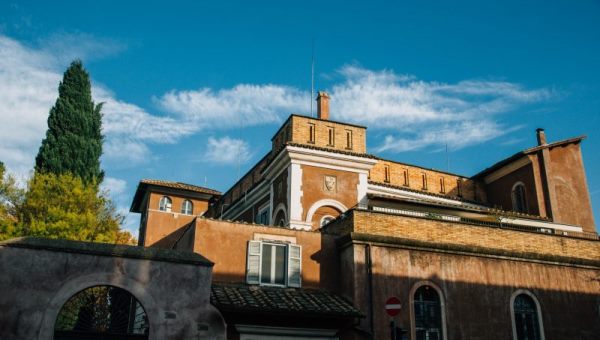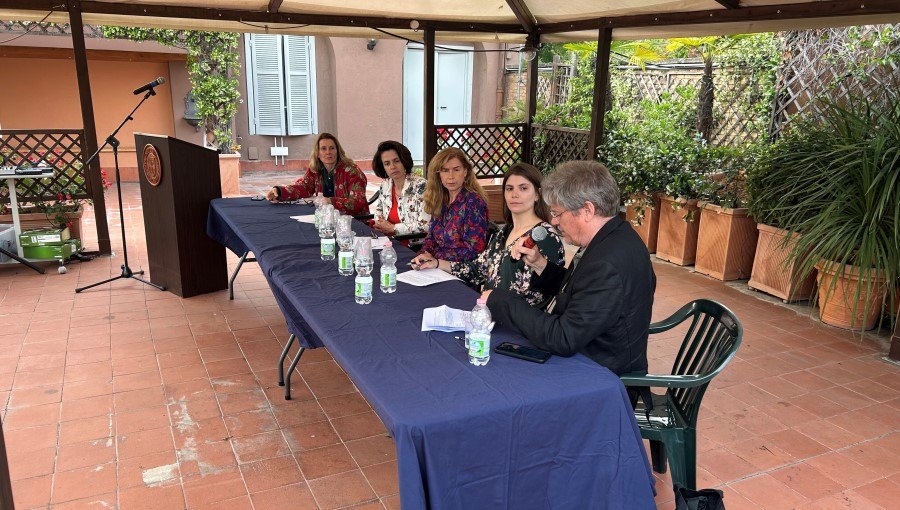John Cabot University Welcomes Renowned Author Barry Callaghan
Distinguished Canadian novelist, poet, and journalist Barry Callaghan, in Italy to launch the Italian translation of his book Hogg. The Poems and Drawings, entertained and challenged students in Professor Brunella Antomarini’s Philosophy and Art and Beauty class on April 3rd.
Callaghan spoke about his career as a war reporter in Africa and the Middle East in the 1970s and about how much this job has affected his writing as a story teller and poet. The challenge he has always had to face, he said, is the same whether dealing with reporting a real fact or creating a fiction: what to choose as a relevant “fact?” In order to expound on this concept, he showed a short video of the jazz song “Compared to What,” recorded by singer Les McCann and saxophonist Eddie Harris. McCann keeps repeating the words: “. . . Trying to make it real, compared to what?” It seems as if what is real is simply what is “made” real. In Callaghan’s amusing stories about his news reporting, he explained that he writes as if he were gambling, always on the verge of losing control of the facts (what he describes as intellectual suicide) and finding a thread to a plot that feeds on accidental interferences with his intentions.
According to Professor Antomarini, “The talk was a perfect illustration of many of the issues we have been dealing with in Philosophy of Art and Beauty, especially in regard to the relationships between technique and chance in contemporary art.”
One of Canada’s great writers, Barry Callaghan has been translated into seven languages. He founded the internationally celebrated literary quarterly, Exile, and the imprint, Exile Editions, while he was a war correspondent in the Middle East and Africa. His numerous recognitions include the W.O. Mitchell Award for a distinguished body of work, a Pushcart Prize in the United States, the CBC Prize for Fiction, more than six National Magazine Awards, and a Doctor of Letters degree from the State University of New York for his “contribution to Canadian and American culture.”






